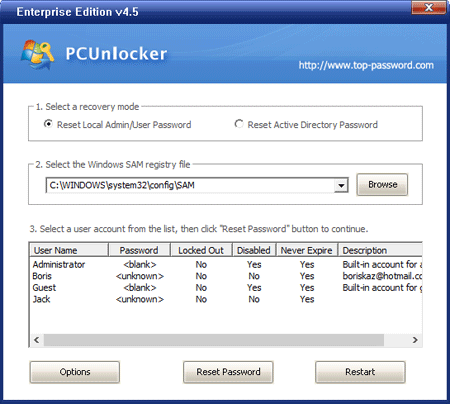-
How To Install Program Without Admin Password Windows Xp카테고리 없음 2020. 2. 17. 17:30
So let's clear a bit, domain user who doesn't have local administrative privileges on a workstation should run some application which requires admin permissions? If it's correct you have 2 choices: 1) Not secure at all, shortcut with admin creds should be created, it's described here 2) More secure as it will allow run only specific application with admin privileges: This works by setting up a scheduled task to run the application in Administrator mode, and then setting up a separate shortcut that tells the scheduled task to run.
- How To Install Program Without Admin Password Windows Xp Login
- How To Install Program Without Admin Password Windows Xp 10
Open up Task Scheduler through the start menu search box (usually you can just type task), and then on the right-hand side click the “ Create Task” link. The first thing you need to do is give the task a short, simple name, preferably without any spaces in it. Then check the box for “ Run with highest privileges” Now switch to the Actions tab, click the New button, and then browse down to the application that you are trying to start. Close out of the dialog by clicking the OK button, which should create the new task in the list.

How To Install Program Without Admin Password Windows Xp Login
You can right-click on it and choose “Run” at this point, simply to make sure that it launches the application the way you were expecting. At this point our scheduled tasks setup is done, so you can close out, just remember the name of task. Create the Shortcut to Start the Task Right-click anywhere on the desktop and choose New Shortcut from the menu. Now here’s where the real magic happens we need to add a command that will run the scheduled task, passing in the name of the task that we used.
How To Install Program Without Admin Password Windows Xp 10
So let's clear a bit, domain user who doesn't have local administrative privileges on a workstation should run some application which requires admin permissions? If it's correct you have 2 choices: 1) Not secure at all, shortcut with admin creds should be created, it's described here 2) More secure as it will allow run only specific application with admin privileges: This works by setting up a scheduled task to run the application in Administrator mode, and then setting up a separate shortcut that tells the scheduled task to run.

Open up Task Scheduler through the start menu search box (usually you can just type task), and then on the right-hand side click the “ Create Task” link. The first thing you need to do is give the task a short, simple name, preferably without any spaces in it. Then check the box for “ Run with highest privileges” Now switch to the Actions tab, click the New button, and then browse down to the application that you are trying to start. Close out of the dialog by clicking the OK button, which should create the new task in the list. You can right-click on it and choose “Run” at this point, simply to make sure that it launches the application the way you were expecting.
At this point our scheduled tasks setup is done, so you can close out, just remember the name of task. Create the Shortcut to Start the Task Right-click anywhere on the desktop and choose New Shortcut from the menu. Now here’s where the real magic happens we need to add a command that will run the scheduled task, passing in the name of the task that we used. Your best answer response leaves encrypted admin credentials stored along with the key data accessible to the user the job runs under. Either system or the actual domain user. In either case, everything needed to decrypt those credentials are accessible to the end user.
A better solution is to create a separate account with ONLY the precise permissions needed by our rogue executable, not administrator access to the entire system. This means debugging the program as it runs and tracing each access failure to the appropriate resource and providing the least privileges necessary to each necessary resource for the new account. So if the application needed to launch a specific service, write to a particular file, or edit a specific registry key, you would apply appropriate permissions to each of these resources as they are identified. This can take a few hours, but beats the heck out of just handing the keys to the entire system over to anyone bright enough to find them.